In many cultures, wine has been and continues to be a staple at the table, and its consumption and use in gastronomy have evolved over time. One example of this is wine pairing.
In a scientific article, published in the journal Enoviticulture , and written by our winemaker Antonio T. Palacios and the Canadian François Chartier , internationally considered one of the most renowned personalities in the search for recipes and pairings between wine and food, is talked about ( A. Palacios García, M. Del Pozo Bayón, F. Chartier, N. Roché (2023), Example of a pairing of molecular harmonies: the aromatic synergy of wine in the gastronomy of pituitary enjoyment, Enoviticultura No. 83) . Here we share with you some of the data that we find most interesting.
What is pairing?
 In the context of catering, food pairing involves combining food and wine to create new sensations. The sommelier recommends these combinations to diners. Although wine was considered a staple food in many cultures, today it is seen as the best companion to food. Food pairing is a modern art that explores how the components of food and wine interact with our sensory perceptions.
In the context of catering, food pairing involves combining food and wine to create new sensations. The sommelier recommends these combinations to diners. Although wine was considered a staple food in many cultures, today it is seen as the best companion to food. Food pairing is a modern art that explores how the components of food and wine interact with our sensory perceptions.
This article explores the concept of molecular pairing in gastronomy, an innovative methodology based on combining foods and beverages according to their molecular composition to enhance flavors and sensory experiences.
Fundamentals of Molecular Pairing
This approach uses the science of aromas, identifying similar chemical compounds in foods to create harmonious combinations. Rather than following traditional pairing rules, molecular pairing is based on identifying common volatile components across different foods and beverages.
Molecular pairing has broad applications in haute cuisine and oenology, allowing chefs and sommeliers to create unique culinary experiences. It can inspire the creation of innovative dishes and beverages, from surprising combinations such as strawberries with mushrooms, chocolate and caviar, coffee and meat, to wines paired with unexpected foods. This approach offers greater diversity and creativity in menu development, although it requires scientific expertise and advanced technological infrastructure for its effective implementation.
In short, molecular pairing offers a scientific approach to gastronomy, allowing for innovative flavor creation and combinations that elevate the traditional culinary experience.
Examples of wine and food combinations
 Here are some examples of pairings that appear in the article, based on molecular compatibility:
Here are some examples of pairings that appear in the article, based on molecular compatibility:
- Syrah and black pepper
- Riesling and ginger
- Pinot Noir and blue cheese
- Cabernet Sauvignon and dark chocolates
- Chardonnay and truffle
- Champagne and caviar
- Merlot and coffee
- Sauvignon Blanc and goat cheese
These pairings demonstrate how molecular compatibility can guide the creation of innovative and harmonious combinations between wines and foods.
Surprising pairings with Crusoe Treasure
 Continuing with molecular compatibility, here are some pairing examples for some of our wines:
Continuing with molecular compatibility, here are some pairing examples for some of our wines:
Sea Soul No. 7 with roast lamb and apricots
Sea Soul No. 8 with Mexican mole sauce
Sea Soul No. 4 and black pepper
Sea Passion No. 6 with duck (see recipe for Chef Daniel Negreira “A not so classic tiramisu )


